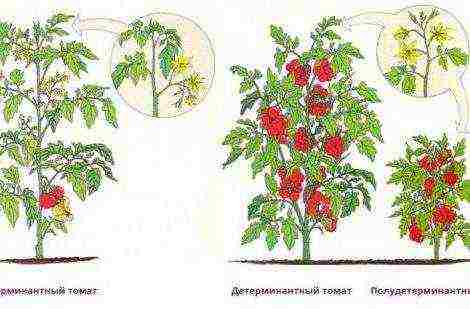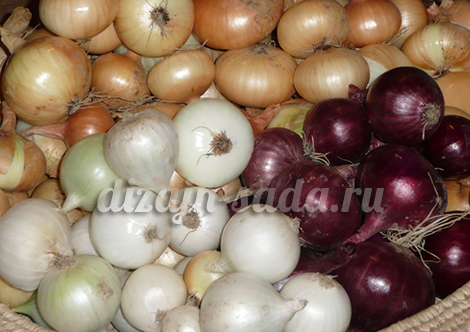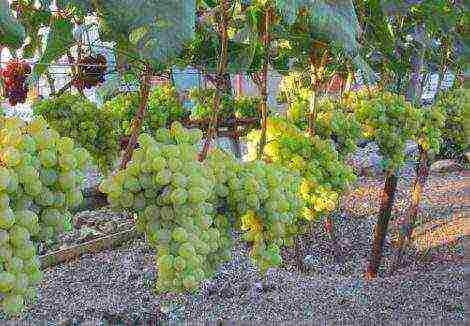Content
- 1 A little history of Vietnamese coffee
- 2 What is Vietnam coffee like?
- 3 The most popular coffee recipes in Vietnam
- 4 Vietnam's Top Grain Coffee Makers
- 5 How is Vietnamese coffee made?
- 6 “We invite you to travel with us to Dalat. You will see the pristine nature of Vietnam: coffee plantations, majestic waterfalls, unconquered mountains ♥ "
Think of coffee, and you are more likely to think of Brazil, Colombia, or perhaps Ethiopia. But today the second largest exporter of coffee in the world is Vietnam. Its market share has grown from 0.1% to 20% in just 30 years, and how has this rapid change affected the country?
A little history of Vietnamese coffee
When the Vietnam War ended in 1975, the country was on its knees, and economic policies copied from the USSR did nothing.
The collectivization of agriculture turned out to be a disaster, so in 1986 the Communist Party made a U-turn - made a big bet, at the same time, on coffee.
In the 1990s, coffee production grew by 20-30% annually. The industry currently employs about 2.6 million people, with grain grown on half a million smallholder farms ranging from two to three hectares each.
This helped transform the Vietnamese economy. In 1994, about 60% of Vietnamese lived below the poverty line, now less than 10%.
What is Vietnam coffee like?
Coffee was introduced to Vietnam by the French in the 19th century, and the instant coffee plant has been operating since 1950.
British consumers still drink a lot of trendy coffees such as espresso, latte and cappuccino. High-end coffee shops mainly buy Arabica beans, while Vietnam mainly grows the harder Robusta beans.
Arabica beans contain 1 to 1.5% caffeine, while robusta beans contain 1.6 to 2.7% caffeine, which makes it more bitter.
Robusta beans are half the price of Arabica beans. Robusta literally means "durable" - it is very insect resistant due to its high caffeine content and has better yields, so it can be grown with little or no chemicals and sold at a lower cost. Plus, this type of coffee contains antioxidants (7-10% chlorogenic acid versus 5.5-8% for Arabica), so let's be healthy with Robusta!
Caffeine is such a small percentage of the total flavor content, especially when compared to other alkaloids, that it has very little effect on coffee aroma.
Vietnamese coffee has characteristics that distinguish it from other coffees and brewing methods. Some regions have been classified into microclimates by European scientists with private sector contracts. Several coffees are grown in these different regions, including Arabica, Robusta, Chari (Excelsa), Katimore and some local Arabica varieties such as SE Arabica. Vietnamese coffee makers mix several varieties for different flavors and balance.
The most popular coffee recipes in Vietnam
Usually coffee is prepared for one serving in one cup with filter / fin. Typically, coffee is served at a table while it is still brewing. Condensed milk is used to sweeten coffee. The use of condensed milk, rather than fresh milk, was primarily due to its availability and ease of storage in tropical climates since colonial times. Long-term practice of special brewing of coffee has led to the fact that the taste preferences of the Vietnamese have changed.
1. Iced coffee (Ca phe da)
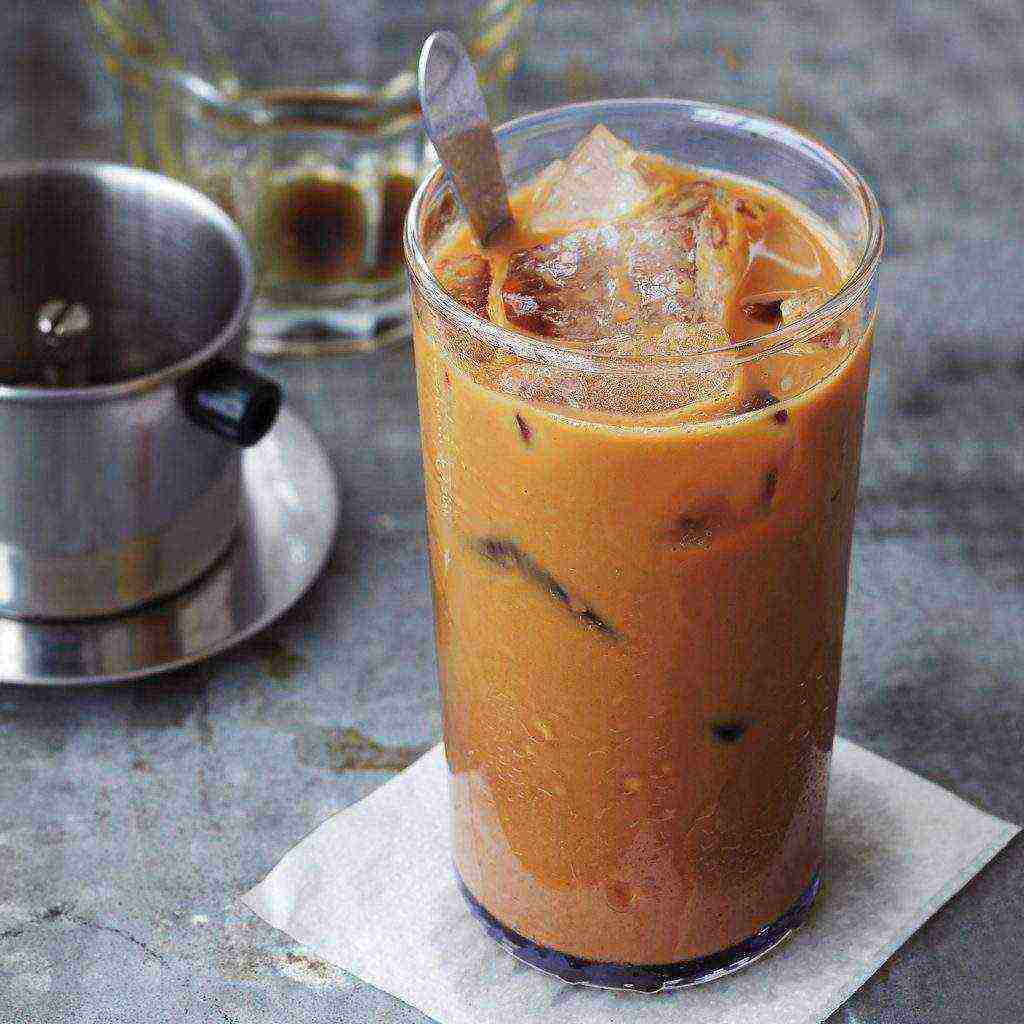 The coffee is served in a glass with an ice base.
The coffee is served in a glass with an ice base.
2. Iced coffee with condensed milk (Ca phe sua da)
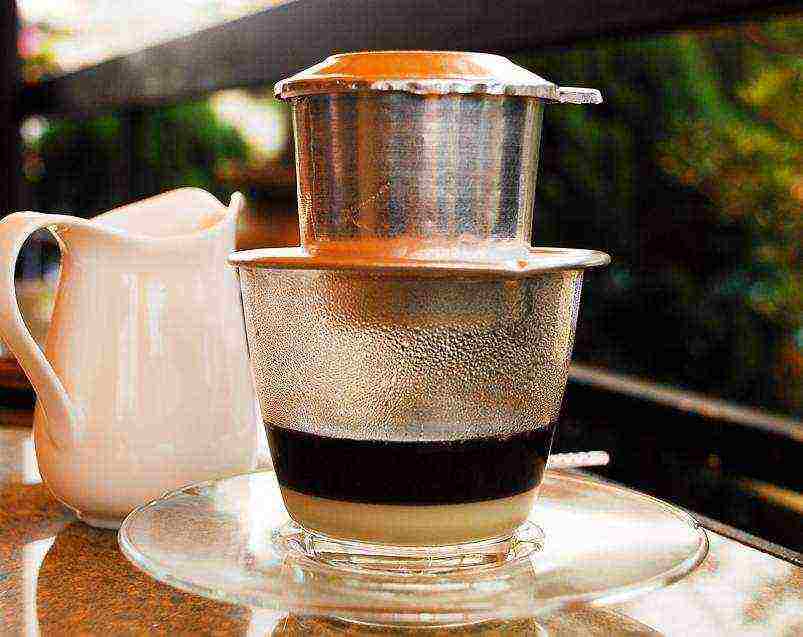 Coffee is served with condensed milk and ice.
Coffee is served with condensed milk and ice.
3. Kopi luwak
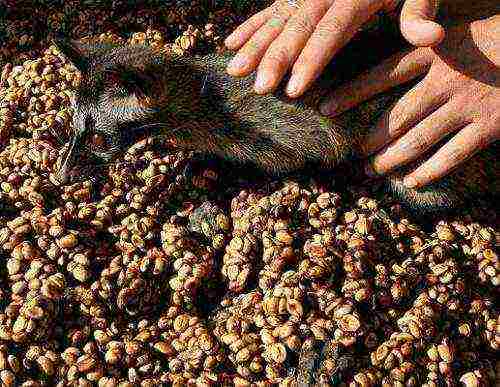 The process of making coffee by feeding the grains to the musang animals (such as a weasel), then after the digestion process, the grains are isolated, washed, and then fried. The coffee acquires a more delicate taste and aroma.
The process of making coffee by feeding the grains to the musang animals (such as a weasel), then after the digestion process, the grains are isolated, washed, and then fried. The coffee acquires a more delicate taste and aroma.
4. Coffee with yogurt (Ca phe sua chua)
Like coffee, yogurt was originally brought to Vietnam by the French and adopted into local culinary traditions. Hearty and creamy, it is served with a variety of fillings, from fresh mangoes to fermented rice - and even coffee. It may sound like an odd combination, but thick yogurt pairs surprisingly well with black Vietnamese coffee - just stir and drink.
5. Coffee with egg (ca phe trung)
The egg yolk is beaten with condensed milk into an airy foam, and then poured into coffee. Coffee and Eggs were first made in the 1940s, when milk was scarce and egg yolks provided a convenient substitute.
6. Coffee smoothie (sinh to ca phe)
In recent years, coffee has found its way into cocktails. Popular juice shops liven up creamy fresh fruit blends with Vietnamese coffee. In Hanoi, try sinh to ca phe chuoi bo (coffee blended with banana and avocado). In Ho Chi Minh City, you can try sinh to ca phe sapoche (coffee blended with sapodilla, a custard-flavored tropical fruit). Both coffees are delicious ways to get your dose of caffeine and vitamins at the same time.
Vietnam's Top Grain Coffee Makers
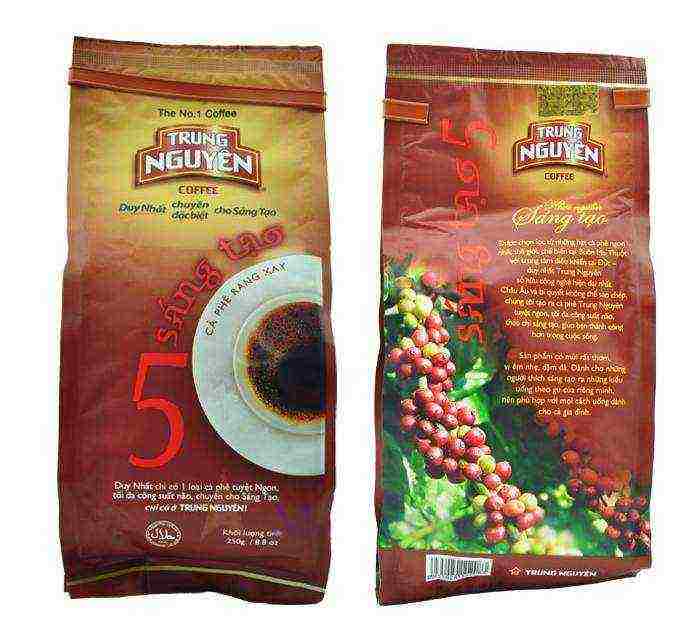 Trung nguyen Is a Vietnamese business group engaged in the production, processing and distribution of coffee. Trung Nguyen exports its products to 25 countries, including major Asian markets such as Japan and Singapore. Various coffee beans are used in coffee products, including robusta, arabica and chari. Vietnamese coffee is traditionally packaged as ground coffee in 500 g packs.
Trung nguyen Is a Vietnamese business group engaged in the production, processing and distribution of coffee. Trung Nguyen exports its products to 25 countries, including major Asian markets such as Japan and Singapore. Various coffee beans are used in coffee products, including robusta, arabica and chari. Vietnamese coffee is traditionally packaged as ground coffee in 500 g packs.
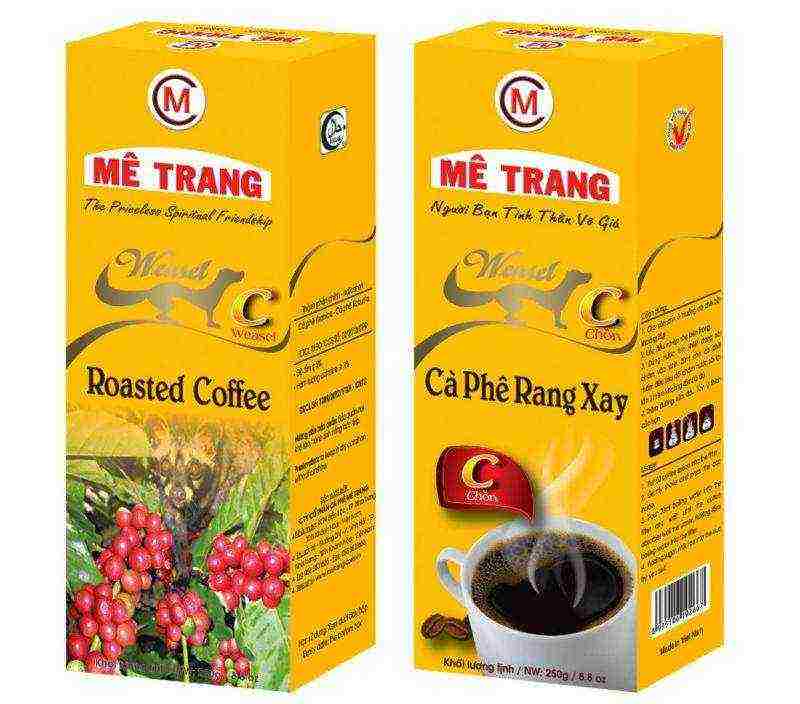 Me trang - the company was founded in 2000. The name "Me Trang" comes from a combination of two place names: Buon Me Thuot, a huge plantation hill with coffee trees, and Nha Trang, a large tourist town with a beautiful long beach.
Me trang - the company was founded in 2000. The name "Me Trang" comes from a combination of two place names: Buon Me Thuot, a huge plantation hill with coffee trees, and Nha Trang, a large tourist town with a beautiful long beach.
Me Trang always focuses on improving product quality through the modernization and standardization of production processes, as well as continuous training of employees, increasing the use of information technology, expanding and promoting the image.
 Phuong vy - specializes in the cultivation and processing of Rabusta and Arabica coffee. The company produces and distributes 5,000 to 7,000 kg of coffee per day. There are currently 2 separate factories, one for the domestic market and one for the export market. The company also trades in semi-finished and processed coffee and currently exports to Korea, Taiwan and several European countries.
Phuong vy - specializes in the cultivation and processing of Rabusta and Arabica coffee. The company produces and distributes 5,000 to 7,000 kg of coffee per day. There are currently 2 separate factories, one for the domestic market and one for the export market. The company also trades in semi-finished and processed coffee and currently exports to Korea, Taiwan and several European countries.
 Dong phuong - the company was founded in 1995, is engaged in trade in agricultural products and coffee processing. The company is one of the leading experts in the processing of soybeans and coffee in Vietnam with modern machines and conveyors, and a team of skilled workers with a production capacity of over 10 tons per day. They make coffee with very high quality roasting and processing, and also produce aromas and additives used in coffee processing.
Dong phuong - the company was founded in 1995, is engaged in trade in agricultural products and coffee processing. The company is one of the leading experts in the processing of soybeans and coffee in Vietnam with modern machines and conveyors, and a team of skilled workers with a production capacity of over 10 tons per day. They make coffee with very high quality roasting and processing, and also produce aromas and additives used in coffee processing.
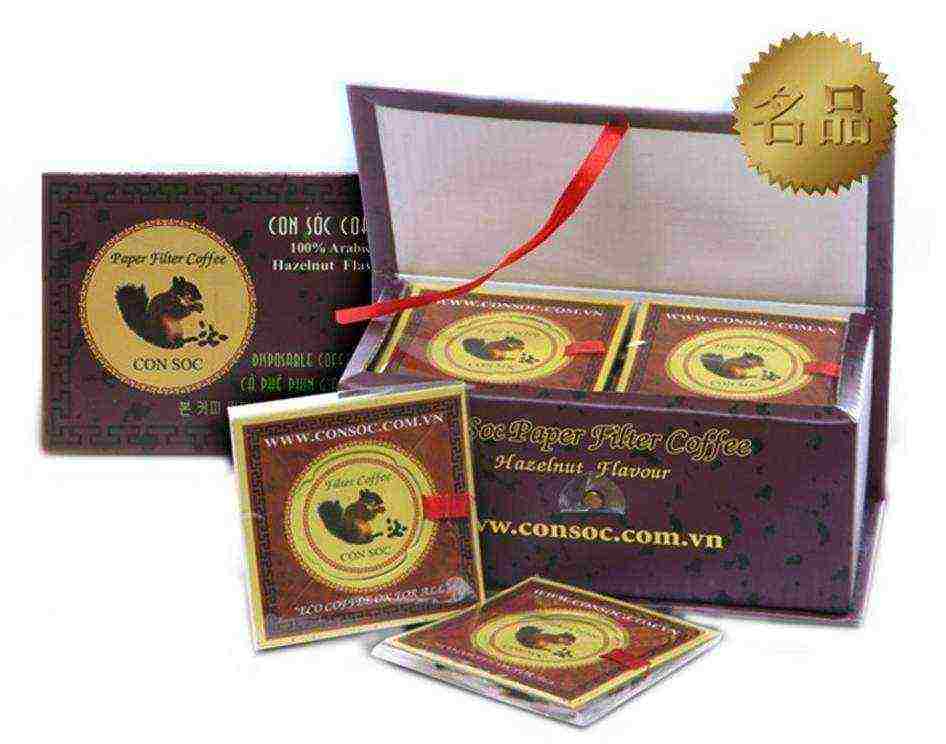 Con Soc - Coffee is grown on the Lam Dong plateau (Dalat) at an altitude of 1500 m above sea level. In this area, the nature is beautiful, the climate and soil are suitable for the cultivation of Arabica and Robusta coffee. Over the years, the company has received quality certificates and recognition from many countries such as Korea, Japan, Russia, etc. Con Soc recommends using paper filters to brew their coffee.
Con Soc - Coffee is grown on the Lam Dong plateau (Dalat) at an altitude of 1500 m above sea level. In this area, the nature is beautiful, the climate and soil are suitable for the cultivation of Arabica and Robusta coffee. Over the years, the company has received quality certificates and recognition from many countries such as Korea, Japan, Russia, etc. Con Soc recommends using paper filters to brew their coffee.
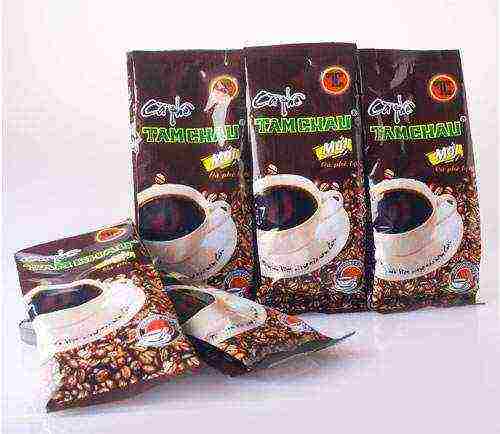 Tam chau Is one of the fastest growing companies in Lam Dong, specializing in the production, processing and trade of all types of tea and coffee for the domestic market, as well as export.
Tam chau Is one of the fastest growing companies in Lam Dong, specializing in the production, processing and trade of all types of tea and coffee for the domestic market, as well as export.
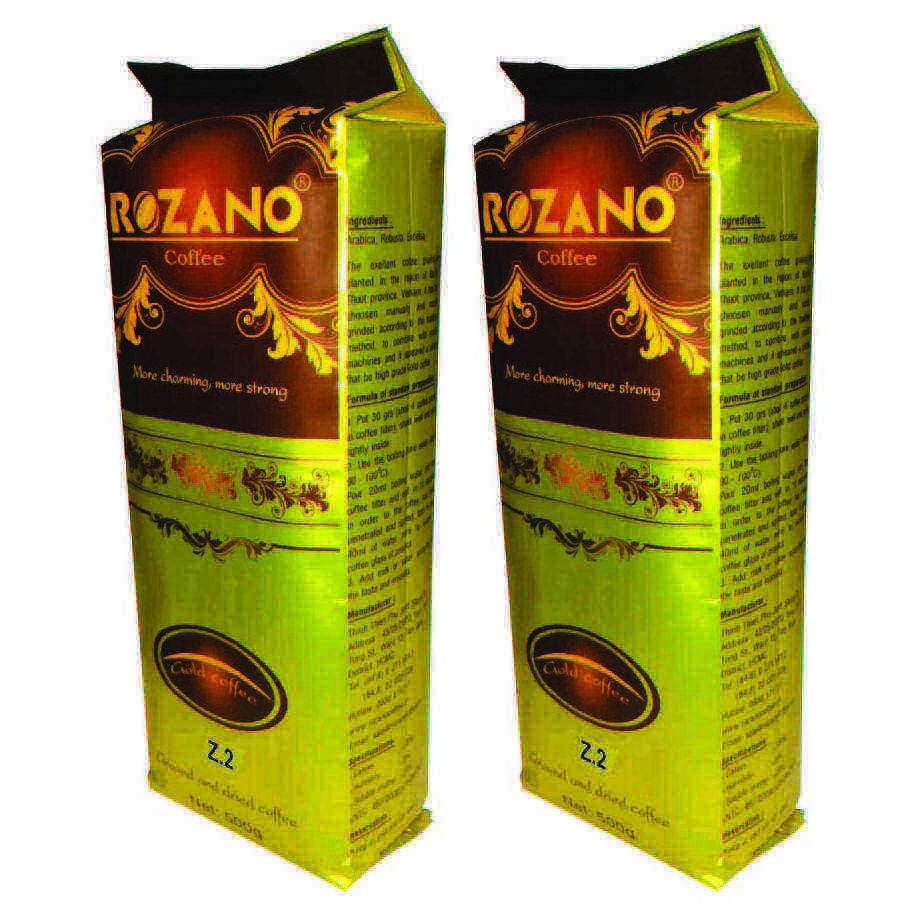 Rozano- the company was established in 2000 as the basis for the further development and sale of pure coffee from Vietnam.Thanks to the power of Vietnamese coffee and the desire to contribute to the construction of the Vietnamese coffee market, ROZANO COFFEE was born with a special formula of 100% pure coffee. In addition, with pure coffee, your health will be enhanced by the special properties of the active ingredients in the coffee beans.
Rozano- the company was established in 2000 as the basis for the further development and sale of pure coffee from Vietnam.Thanks to the power of Vietnamese coffee and the desire to contribute to the construction of the Vietnamese coffee market, ROZANO COFFEE was born with a special formula of 100% pure coffee. In addition, with pure coffee, your health will be enhanced by the special properties of the active ingredients in the coffee beans.
Vietnam is one of the Asian tourist centers. Local exoticism embodied in the ancient Vietnamese culture, interesting national cuisine, nature unusual for Europeans and quite modern living conditions in Vietnamese cities allow you to have a good rest in this corner of Southeast Asia, having received a sea of unforgettable impressions. In addition, prices here are still significantly lower than at more "promoted" resorts. Tourism is not the only distinguishing feature of Vietnam. Many people are surprised to learn that this country occupies one of the leading places in the world coffee market. But in fact, in terms of export volumes, Vietnamese coffee is second only to Brazil (and in 2012 it even turned out to be the leader). How Vietnam became a "coffee country"
The coffee industry in Vietnam is just over 150 years old. This is quite a bit. In Indonesia, this product began to be cultivated in 1699, in Colombia, coffee was first grown in 1723, and Brazilian plantations appeared in 1760. French missionaries brought coffee trees to Vietnam. Among Catholic priests, coffee was very popular (at one time this drink was approved by the Pope himself).
Europeans quickly realized that, due to its climate and geographic location, Vietnam was ideal for growing crops like coffee. The fruits of coffee trees here did not just ripen, but were saturated with moisture and sunlight, while receiving specific flavors from local soils. By 1888, coffee cultivation in Vietnam had become widespread. The province of Nge An stood out in particular, as it had a climate suitable for this. The first large plantations appeared here.
By the beginning of the 20th century, coffee began to be cultivated on the Tai Nguyen plateau, which expanded the palette of Vietnamese coffee. After that, the French organize the cultivation of coffee in the Central mountainous region of the country. At the moment, it is here that most of the Vietnamese coffee is produced.
Today Vietnam is the main global supplier of robusta. More than half a million people are engaged in the production of this type of coffee. And in the harvest season, another two million are attracted. Thus, the well-being of a significant part of the country's population depends on coffee. Vietnam is a country of small landowners. Plantations exceeding 5 hectares in area give less than 1% of the yield. 46% of coffee is grown on plantations ranging from 1 to 5 hectares. And 53% of the harvest is provided by peasants who have plots of less than 1 hectare. At the same time, almost all coffee production in Vietnam belongs to the private sector.
State farms collect less than 10% of the country's coffee production. The active development of modern coffee production began in Vietnam in the mid-70s of the 20th century. If in 1975 plantations occupied 20 thousand hectares, and the entire harvest did not exceed 5 thousand tons, then by the end of the 90s 500 thousand hectares were already allocated for coffee, giving 700 thousand tons. Consequently, not only the area of coffee plantations has increased. Due to the change in technology, the yield has increased 6 times! In 2007, Vietnamese producers sold 1 million tons of coffee. Exports accounted for 90% of this volume. Vietnamese coffee has taken 15% of the world market. At the same time, no country produced as much robusta as Vietnam.
Vietnamese coffee - what types and varieties are grown 1. Vietnamese robusta
Currently, Vietnam supplies robusta to the world market, from which instant coffee and coffee blends are produced. Robusta is an extremely unpretentious type of coffee. Most of the robusta plantations are located at a level of 500-600 meters above sea level.An abundance of moisture and a sufficient average annual temperature are the main conditions for high yields. These coffee trees easily tolerate high temperature differences between day and night. In general, the cost of such coffee is not high, which, together with sufficient demand for it, explains its wide distribution.
Many experts believe that Vietnamese Robusta is the highest quality representative of this variety. Comparing it with the products of other Asian and African manufacturers, one can note the large grains of Vietnamese coffee and a mild, unsharp taste. Of course, depending on the specific year and batch, the parameters of coffee may vary somewhat, but if the consumer wants to experience sharper and richer taste tones, then it makes sense to try African varieties. The unique climatic conditions of Vietnam make the taste of the local robusta less sour than that of the African one, and the bitterness smoother. In this coffee, nutty notes, echoes of spices appear.
The Vietnamese Blue Dragon variety is characterized by echoes of toasted bread, bitter cocoa and pistachios. The seeds of the "Blue Dragon" are large and regular in shape. The density of the taste is average, and it itself appears delicately, unusual for Robusta. Another popular variety of Vietnamese robusta - "Sang Tao" - has the maximum strength and thick aroma, and a sweet note breaks through its bitterness. At the same time, this coffee cannot be called too “hard”, which is very often typical for Robusta.
2. Vietnamese Arabica
The Vietnamese produce very little Arabica. Only 5% of the total coffee harvest belongs to this type of coffee. But given the scale of the Vietnamese coffee industry, this is quite a lot (almost 50 thousand tons). For comparison, this is approximately the volume of coffee production in the whole of Costa Rica or on half of the plantations in Nicaragua. The renowned coffee center Guatemala produces only 4 times more coffee than the Arabica crop in Vietnam. The bulk of Arabica in Vietnam is grown in the same place as robusta - in the Tai Nguyen region (Central Highlands). Here are the provinces of Lam Dong, Kontum, Daklak, Zyalai, Daknong.
But Arabica is a much higher mountain species than Robusta. The plots of land planted with this coffee are located at an altitude of 1200-1600 meters above sea level. The plantations are located on slopes and terraces and almost do not require artificial shading (for this, when growing other varieties, specially planted trees are used). Mostly cultivated varieties of Arabica "Katimor" and "Bourbon". They were introduced by the French. Of all the Vietnamese varieties of Arabica in Russia, the most common is "Vietnam Dalat" - high-quality and quite budget coffee. "Vietnam Dalat" has an unsharp and balanced flavor range. It contains bready and nutty shades, a pleasant berry acidity and a refreshing taste. You can prepare this coffee in any way, but it turns out especially well in a coffee machine.
3. Rare variety "Excelleza" "Excelleza" (also called "High coffee") refers to the elite varieties. The volume of production of this coffee is very small. The fact is that this coffee tree bears fruit irregularly, and it is impossible to plan deliveries. "Excelleza" is mainly used in the preparation of mixtures. Its unusual aroma and taste allows to give the blends pleasant shades, appreciated by coffee connoisseurs. The famous "Kopi Luwak"
Kopi Luwak is one of the most expensive coffee varieties. Its exotic taste is achieved by an equally exotic preparation method. The bottom line is that the ripe fruits of the coffee tree are fed to small rodents - musangs. Their stomachs digest the pulp, but not the grains, which are fermented in a special way, passing through the body of animals. During the preparation process, coffee is collected from rodent droppings, the beans are washed and dried in the sun. After that, this coffee starts to cost very expensive.
4.Kuli Coffee Kuli is a premium coffee produced in the Dak Lak province (more specifically, in its capital, Buon Ma Tuon). It is based on selected Arabica and Robusta, the grains of which are checked by hand. Unfortunately, the volume of supplies of this variety is very small. Kuli coffee is characterized by a strong aroma and rich flavor range. It leaves a pronounced long-lasting aftertaste and has a powerful tonic effect. How the Vietnamese themselves make coffee
Video: How to brew Vietnamese coffee filter prepare Vietnamese coffee
The characteristics of Vietnamese coffee varieties determine the nature of their preparation. Nobody brews coffee in a Turk in this country. Treated in this way, it will taste too bitter. In order to get a delicious drink, the Vietnamese use special aluminum filters, complete with special presses. The filter is installed on the cup, coarsely ground coffee powder is poured on top (the diameter of fractions is 2-3 mm.). Then this structure is pressed with a press and poured with boiling water. The brewing time is 4-5 minutes, after which you can drink coffee.
Another popular option is condensed milk coffee. Unlike our compatriots who add condensed milk to coffee, the Vietnamese do the opposite - pour coffee into condensed milk. At the same time, condensed milk takes? cups, and coffee is poured on top of it. At the same time, you cannot stir the drink. The milk should dissolve by itself in the coffee. Very often, a filter is installed on a cup of condensed milk, and coffee slowly drips onto the milk.
Another popular option is coffee with an egg. Beat the egg until creamy and spread on top of the coffee. This crème brulee-like layer must first be eaten with a spoon, followed by coffee, which can be either hot or cold. In the case of hot coffee, the coffee cup is placed in a bowl of boiling water, in the case of cold coffee, in ice water.
Video: How to Make Vietnamese Coffee
What kind of coffee to buy in Vietnam for a tourist Since Vietnam is a country rich in coffee, then a tourist has a lot of choice. Many people believe that the most delicious Vietnamese coffee is in Dalat, and it is better to buy it there. There are a lot of plantations in Dalat and prices are quite low (by the way, tea can also be purchased here inexpensively). Popular varieties are Trung Nguyen and Me Trang. Someone calls the best Vietnamese coffee Che Phin 4 - a blend of Robusta, Arabica, Catimore and Excels. The Duong Phuong cultivar has also received recognition. The legendary Kopi Luwak will cost a gourmet $ 3,000 per kilogram. At the same time, it is possible that you will not be sold the original coffee. If in Vietnam, Indonesia or the Philippines you come across this brand with a price tag of $ 20 per pack, then just smile. There is no point in buying it. The pack will most likely contain an artificially fermented Chon.
Vietnam - perhaps the most popular tourist country in Southeast Asia.
Local exoticism, embodied in the national culture of the Vietnamese, and in their unusual cuisine, like a magnet, attracts tourists from all over the world. At the same time, Vietnam is one of the world's leading coffee suppliers. It occupies an honorable second place in the export of this drink, second only to Brazil.
Vietnamese coffee products are purchased every year by almost 80 countries around the world.
Vietnamese coffee is something special and unique.
What is Vietnamese coffee? Its differences
The drink is popular all over the world due to its exquisite taste and extraordinary aroma. Coffee organically combines notes of vanilla, chocolate, spices, caramel and cream.
It is rightfully believed that the Vietnamese are the only nation that has managed to create a perfectly harmonizing flavor bouquet.
Several types of coffee are actively produced in Vietnam, including arabica, robusta and a number of luxury and expensive ones. The Kopi Luwak variety is the most expensive and brings the country almost a billion dollars in annual profits.Coffee trees are mainly found in the south of the country, although some unpretentious varieties are successfully grown in all regions.
Distinctive features of the varieties of Vietnamese coffee are softness, the absence of sharp bitterness and a rich palette of taste sensations in comparison with the same Arabica or Robusta of African origin.
At first glance, the drink perfectly combines various shades of taste, giving a long-lasting unique aftertaste.
The history of the drink
Vietnamese coffee has a rich and curious history dating back to 1857. At this time, the French colonialists planted the first coffee trees in fertile soil, believing that the local climate was optimal for the ripening of the beans. The first plantations appeared in 1888 in the province of Negan.
A few years later, coffee began to be grown in the Central Mountain Region on the Tai Nguyen Plateau. According to historians, the total area of plantations was more than 600 thousand hectares.
In the middle of the last century, the invigorating drink became part of the country's culture, which lasted until the start of the US military offensive. As a result of the war, coffee production fell into decay, like the entire economy, but thanks to the general love of the Vietnamese for this drink, everything recovered, and the state in the late 70s set a course to bring coffee production to the international level.
Plantations began to appear and expand in almost all corners of the country, and when the way to the world market opened, Vietnam experienced a real coffee boom. Since 1996, Vietnamese coffee has taken one of the leading positions in the world and retains it to this day.
In 2001, the Asian supplier joined the International Coffee Organization, which allowed tightening control over production and improving product quality. But, unfortunately, cases of fraud and substitution of real grains with soybeans sometimes occur, which casts a shadow on the reputation of Vietnamese producers and does not fully comply with international standards.
Real, genuine Vietnamese coffee is the perfection of aroma and taste, which cannot be confused with invigorating drinks from other countries.
Now the center of coffee production is located in Vietnam in the Dak Lak province, which rises 1.5 km above sea level. The plantation area is 506 thousand hectares, the yield is about 2-2.5 tons per hectare. The harvest each year is approximately 1 million tons. Small-scale land tenure is highly developed in the country.
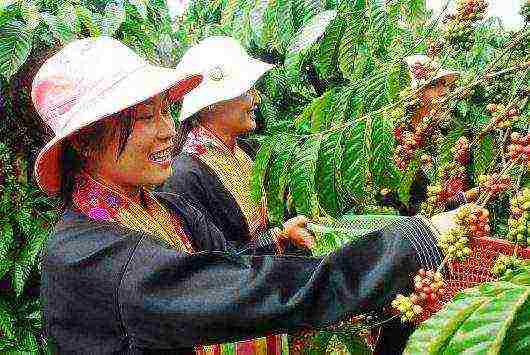
Only 1% of coffee production is grown on large plantations from 5 hectares. 46% of trees grow on plots from 1 to 5 hectares, and the remaining 53% are provided by peasants who have at their disposal small areas of up to 1 hectare. Almost all coffee is produced by individuals and companies.
Vietnamese coffee varieties
Vietnam's climate is great for growing coffee on an industrial scale, but some varieties require special conditions, which increases their value, and they are considered more sophisticated and exclusive. The most popular Vietnamese coffees are:
-
robusta (makes up about 85% of all coffee beans) - unpretentious and the most inexpensive;
-
Arabica - it accounts for almost 14% of coffee production;
-
Arabica SE is a rarer variety;
-
catimore;
-
excellence;
-
coolies;
-
mine luwak.
To fully immerse yourself in the world of the variety of Vietnamese coffee, it is worth learning more about each of the varieties. So…
Robusta
Vietnam ranks first among the world's suppliers for the production of robusta. This variety is completely unpretentious, and the main conditions for its cultivation are only a sufficient average annual temperature and high humidity. Most plantations with robusta are located 500-600 meters above sea level. Coffee trees easily endure daily temperature changes and delight with an abundance of fruits.
The taste of Vietnamese robusta is softer than that of producers from other countries and is completely devoid of harshness. Natural and climatic conditions affect the taste of the drink - the bitterness is smoothed out, and the aftertaste contains nutty and spicy notes.
Arabica
Arabica grows much higher than robusta - at 1200-1600 meters above sea level. Forested areas are mostly located on slopes and practically do not need artificial shading. The most common varieties of Arabica are Bourbon and Katimor.
And on the Russian market, "Vietnam Dalat" is in demand - high-quality and affordable coffee, which is also presented in the assortment of our online store. It is distinguished by its nutty and bready shades, the presence of a pleasant sourness and a refreshing taste. It is prepared in different ways, but the best drink is obtained in a coffee machine.
Excelleza (shari)
This is a rare and expensive type of Vietnamese coffee. Excelsia is not suitable for production on an industrial scale, since such trees are capricious, they bear fruit irregularly. Exelza coffee beans are imported in limited quantities. In the finished drink, caffeine is contained in a minimum concentration, and due to this, the plant flavor is strongly felt. However, in combination with elite coffee blends, unique variations come out with unforgettable flavor nuances.
Cooley
This invigorating drink belongs to the "premium" class and is produced in small batches. It is based on carefully selected Arabica and Robusta, all of which are professionally hand tested. The cost of coolies is high, and this is due not only to the rare species, but also to the wide range of rich taste, bright aroma and long aftertaste. The drink has a strong tonic effect and is considered one of the best natural energy drinks.
Katimore
Catimore is a hybrid of two coffee varieties, Hibrido de Timor and Cattura. The drink has a long fruity aftertaste and is highly regarded by gourmets. It is difficult to buy catimor in any country, because, like other types of luxury coffee, it is imported in minimal quantities, and it is not very common in the homeland.
Kopi Luwak
This is the most exclusive and expensive type of coffee not only in Vietnam, but throughout the world. Kopi Luwak is so exotic and rare due to its extremely specific production method. The bottom line is that the ripe fruits of the coffee tree feed on small predators - musangs for six months a year. In their stomachs, only the pulp is digested, and the grains go through fermentation in a special way. During the manufacturing process, coffee fruits that have passed through the body of animals are selected from the droppings, thoroughly washed and dried in the sun.
Luwak coffee is believed to have powerful healing properties and does not negatively affect the heart rate, but not everyone dares to try it. However, connoisseurs of the drink note the softness of the taste, slight sourness and chocolate shades in it.
How is Vietnamese coffee made?
The nature of the preparation of Vietnamese coffee is influenced by the characteristics of the drink. In an ordinary Turk, it is almost never boiled due to the appearance of bitterness after such processing. It is best to use a special aluminum filter coffee maker. Silver can be used to cook exclusive grains.
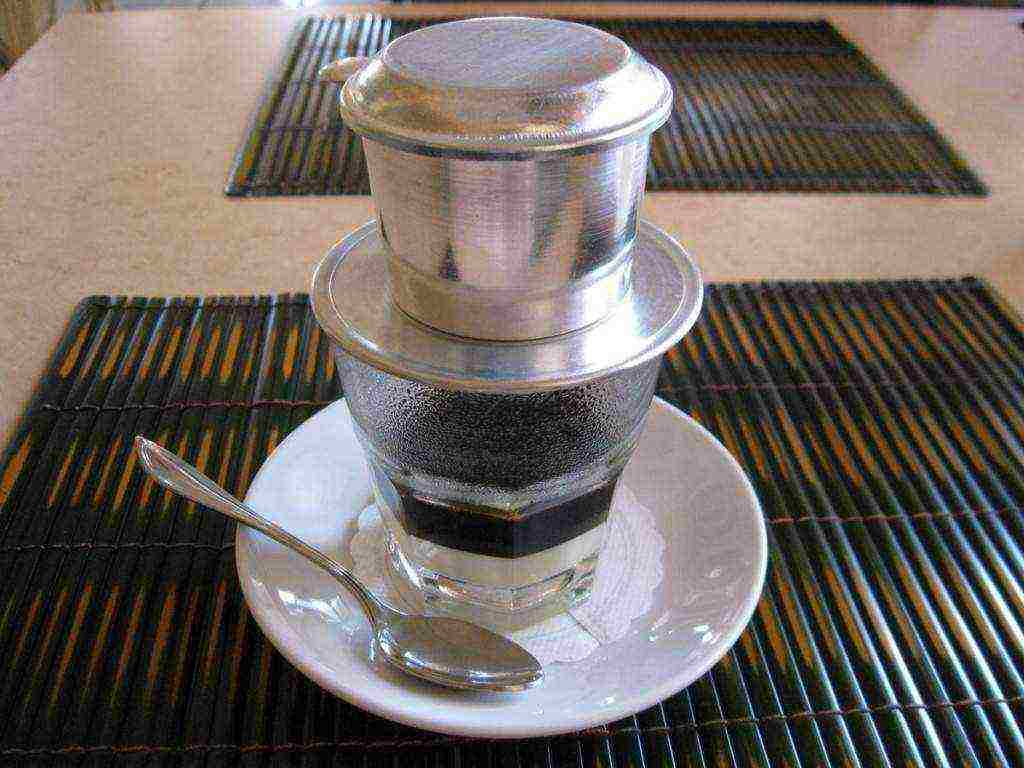
So, to make coffee according to a Vietnamese recipe you will need:
-
100 ml of boiled water;
-
ground coffee;
-
metal filter;
-
glass or cup.
The filter is placed on a glass or ceramic cup and ground coffee is poured into it, evenly distributing to the bottom. The number of spoons added depends on the preference for the strength of the drink. Then the coffee is covered with a press and tamped slightly by turning it several times to the sides.Now you can pour about 10 ml of boiling water to reveal the aroma, and after 15 seconds add the remaining liquid.
It remains to cover the cup and wait for the drink to start dripping. A rapid drop in droplets indicates that the coffee is not compressed enough, and too slow, indicates that the coffee is too dense. The brewing time is within five minutes. The present drink is filtered through a filter.
Cooking options
In addition to the classic recipe, the Vietnamese widely use several more methods for preparing and serving coffee.
-
Iced coffee... It is brewed like regular coffee, only then ice is added to the drink. Iced coffee is served in large tall glasses with a straw.
-
Coffee with egg... Beat the egg until creamy and pour over the top of the drink. First, they eat this kind of creme brulee with a dessert spoon, and then they drink coffee, which can be either hot or icy.
-
Condensed milk coffee... The drink is poured into the condensed milk already in the glass and do not stir. Condensed milk should dissolve on its own. Often a filter is placed on the container, and the coffee drips to the bottom.
In our online store you can buy natural Vietnamese coffee "Vietnam Da Lat". We fry the purchased raw grains directly in Moscow before packing and sending to customers. Our main goal is to bring quality coffee at an affordable price to every home and office.
We sell only certified products that have passed rigorous testing, so the authenticity of Vietnamese coffee and the richness of its taste can be guaranteed 100%.
All coffee lovers should definitely try Vietnam Dalat coffee. This soft but rich drink gives a great boost of vivacity and good mood. You can try to prepare it in different ways - in any case, the taste of Vietnamese coffee will be memorable, and you will want to order it again!
Want to taste authentic Vietnamese coffee? Only for blog readers an exclusive 5% discount on the promo code BLOG17
Everyone who comes to Vietnam invariably receives a lot of varied and sometimes contradictory information about Vietnamese coffee. Tourists and travelers are showing interest in this issue.
In this article and in the video plot, we tried to select common myths and interesting facts, which we will tell you about.
In Vietnam, many varieties of coffee are grown, there is even "white coffee". Is it so?
There are four types of coffee in the world today: Arabica, Robusta, Liberica and Exeltia. Moreover, the most famous and widespread are the first two. This is due to the peculiarities of the cultivation of coffee trees, as well as the taste of the drink obtained from the grains of a particular variety.
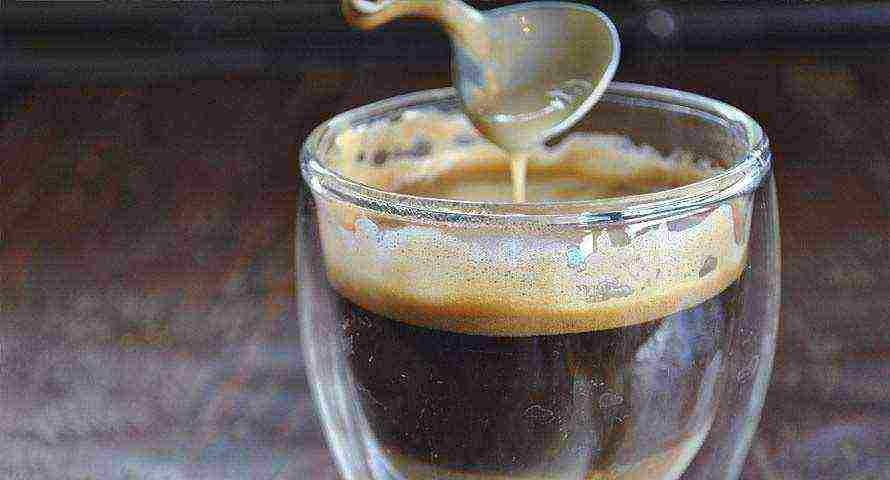
All other "varieties" are just marketing gimmicks, or beautiful names for coffee-based drinks. For example, "white coffee" is simply traditional Vietnamese coffee with condensed milk.
Cultivation of coffee is a centuries-old tradition in Vietnam.
This is also a myth, since the cultivation of coffee and the planting of coffee plantations in Vietnam began relatively recently - in 1857. And it all began with the filing of the French colonialists. Then, the development of this direction, as well as many other things, was influenced by the Vietnam War.

And only in the last few decades, the scale of coffee cultivation in Vietnam has reached impressive figures, which have allowed the country to become a serious player in the coffee raw materials market.
The most popular coffee in Vietnam is Robusta.
This is partly true, Robusta is the main variety grown in Vietnam in quantitative terms. However, in the province of Lam Dong, high-quality arabica is also grown, which can compete with the best samples from Brazil, Costa Rica and Africa.
Robusta is very popular in Vietnam because it is unpretentious and hardy.Its taste can be easily improved with milk or condensed milk, and its invigorating properties, for which many people value coffee at altitude.
Arabica, on the other hand, has a softer and more subtle aroma and taste, therefore it is appreciated by those coffee lovers who value the drink itself.
Luwak - the best coffee in the world or just another trick of the sellers?
Initially, luwak was the name given to Arabica grains, which in the wild were eaten in small quantities by animals - musangs. Once in the stomach of the animal along with the fruit, the coffee berry undergoes fermentation, which gives an amazing aroma and taste, provided that it is correctly selected and roasted.
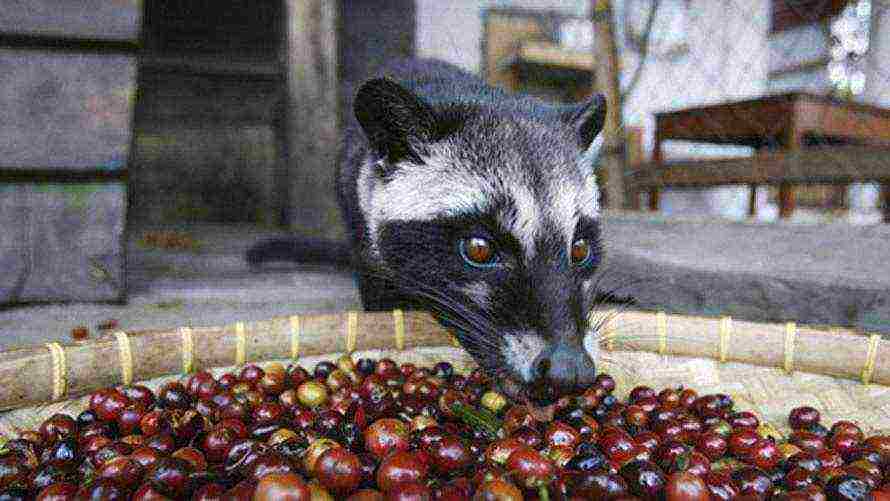
Real luwak in Vietnam is produced in the order of several tens of kilograms per year! The cost of this coffee is estimated at hundreds and thousands of dollars. However, there is no reliable evidence that this coffee really has any unique taste that is worth overpaying for. There is a suspicion that all this is pure marketing.

What can we say, many want to make money on luwak. Now in Vietnam, there are farms where musangs are kept in small cages. The animals are fed only with coffee berries. It would seem that this is so, but the difference between wild luwak and factory milk is the same as between soy milk and country cow's milk.
In addition, unscrupulous sellers dilute even such a luwak. After all, if you add a little grain of musang-poured grain to a kilogram of the cheapest regular coffee, then this is almost the same coffee - everything is "honestly".
So, before buying any luwak, think about how this coffee matches its price, and most importantly, whether you need such a dubious delicacy.
Coffee flavors and oil roasts.
It is worth thinking before buying coffee with flavors, which are so popular not only in Vietnam, but also in Russia. When a store offers coffee that smells like chocolate, caramel, vanilla or whatever, know that these are the most common flavors. This is how manufacturers add attractiveness to their product, like chips are sprinkled with chemistry so that they have a taste, so coffee gives aromas and flavors.

The coffee smells like coffee. Coffee can have nuances of aroma and taste, just as a good wine has its own bouquet. But this is achieved thanks to the peculiarities of the variety of coffee berries, growing conditions, competent selection and the correct degree of roasting.
By the way, about roasting: margarine or palm oil is an essential attribute in the production of most of the coffee, alas.
Butter, usually vanilla-scented, is added to already roasted coffee while it is still hot to create flavor and aroma. Why is it not recommended to brew butter coffee in automatic coffee machines? Because the hoses and small holes through which the coffee passes are clogged.
The second reason for the oily grain is strong and quick roasting at high temperatures. Most large companies choose it, because this cuts production time and hence costs. In this case, the essential oils, which should be inside the grain and transfer the true aroma and taste to the drink during brewing, come out and cover the grain with a shiny film, which indicates the low quality of the grain. This coffee quickly takes on a rancid taste.
In both cases, butter is a sign of poor quality coffee, you should NOT buy such coffee, moreover, such a drink will harm your health.
Can you find good coffee in Vietnam?
Of course it is possible, because besides the fact that the technologies of growing coffee beans are being improved and Vietnam has high-quality raw materials (both Arabica and Robusta varieties), there are people in this country who really love coffee.
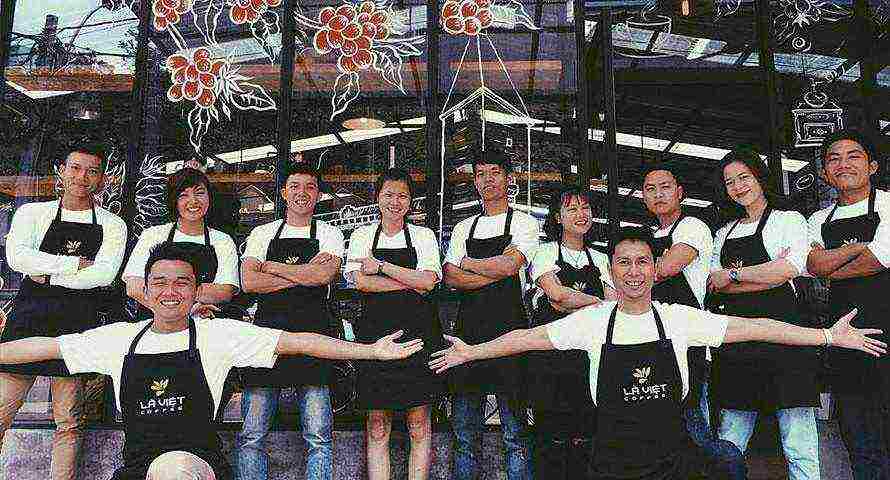
The enthusiasm of some companies is helping to make significant progress in the cultivation, selection, processing and blending of quality Vietnamese coffee.
One of the prominent representatives of coffee companies that produce a high-quality product and care about their reputation among customers is La Viet Coffee.
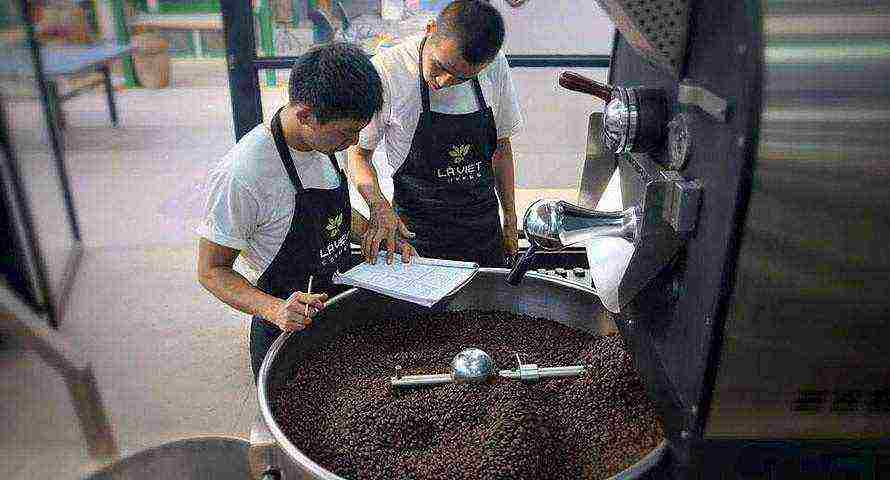
This company produces perhaps the best coffee in the country. The best specialists from different countries are engaged in the production of specialty coffee, train everyone in the coffee craft, incl. and local students from agricultural institutes.
La Viet Coffee's products are mainly exported overseas. Most of all, they want to change the reputation of Vietnamese coffee, so they make the best coffee in the country and tell everyone about it. Movie stars, famous personalities, politicians are their regular guests.
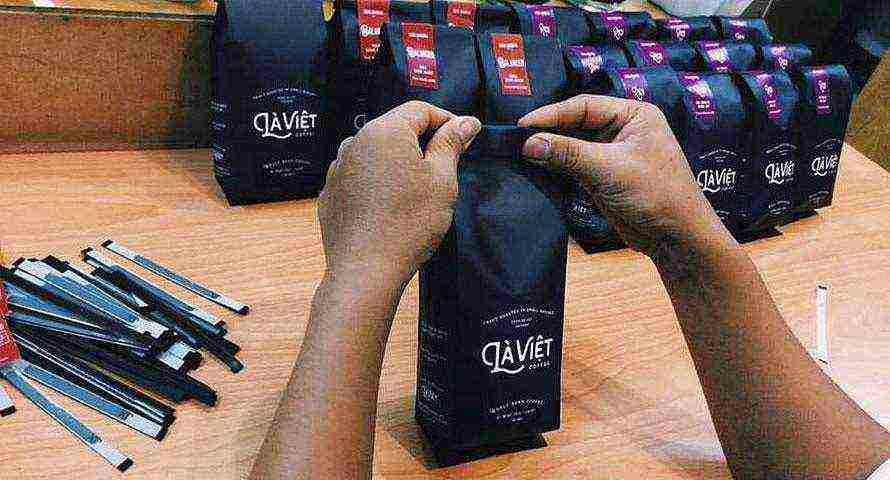
Most travel companies, bringing tourists on an excursion to Dalat, go to large coffee shops, where the assortment is not much different from that offered by supermarkets in Nha Trang.
You can visit La Viet Coffee as part of a tour to Dalat from the "Uncle Vanya" company. This is one of those places in Dalat where it is really interesting to visit: you will see the process of making the best coffee, taste the best and rare varieties of an invigorating drink and make sure from your own experience that there is high-quality coffee in Vietnam.
Well, if for some reason you did not get to Dalat, then an exclusive representative of La Viet Coffee recently appeared in Nha Trang.
You have a great opportunity to appreciate the high quality and excellent taste of real Vietnamese coffee.
—
Here are some more helpful articles:
- 7 rules for a comfortable flight
- 5 gifts from Vietnam that hardly anyone will be happy about
“We invite you to travel with us to Dalat. You will see the pristine nature of Vietnam: coffee plantations, majestic waterfalls, unconquered mountains ♥ "
Make us part of your Nha Trang holiday story 🙂

